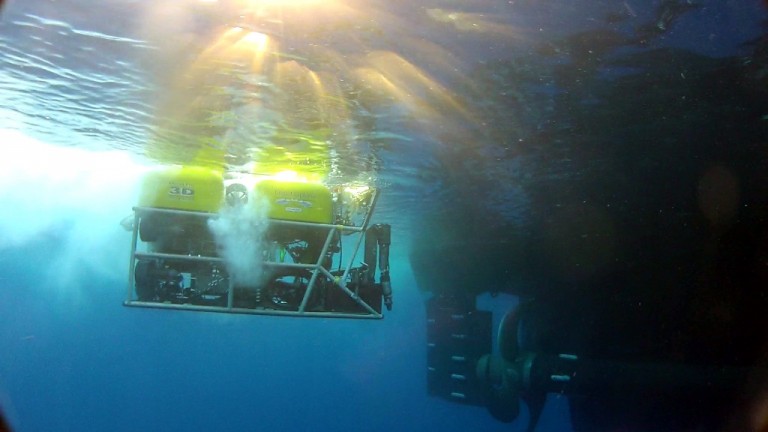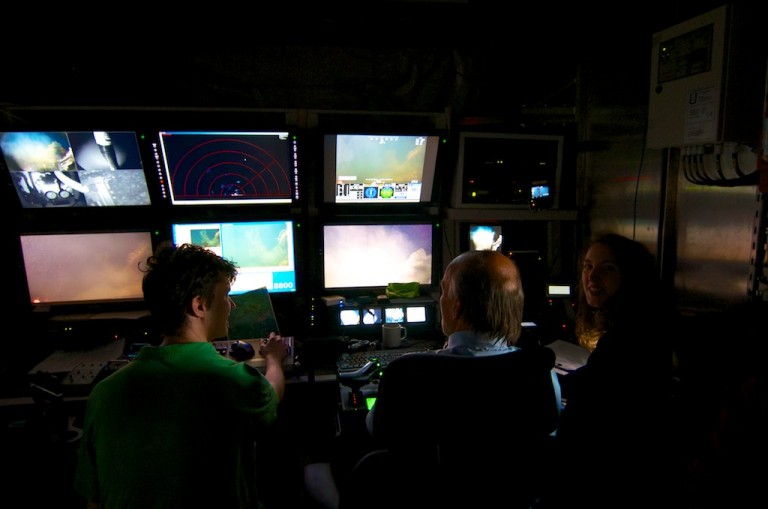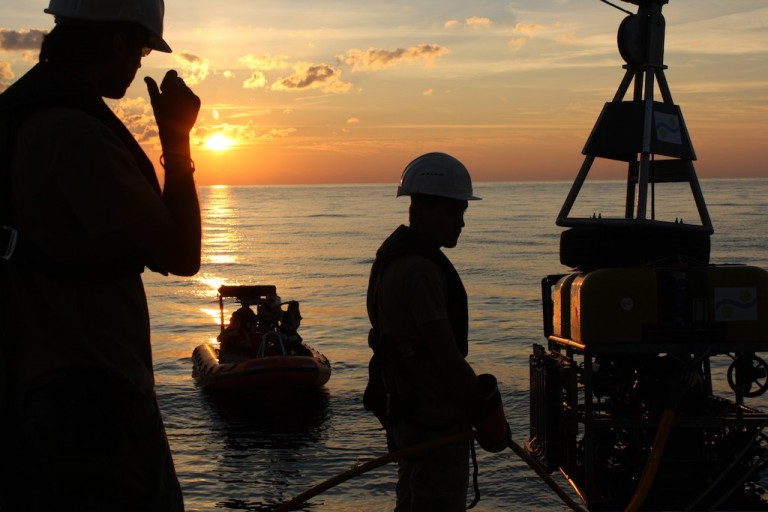R/V Falkor operations today focused on a community of deep-water corals located 11 kilometers southwest of the Macondo wellhead where Deepwater Horizon disaster occurred in April 2010. This site was one of 11 sites of varying distances from the oil spill where Dr. Chuck Fisher and his colleagues conducted ROV surveys within four months after the wellhead was capped to evaluate potential impact of the spill on the deep-sea ecosystems.

His recent paper published in March 2012 issue of the Proceedings of the National Academy of Sciences reported that oil from the spill did directly impact coral colonies at this particular site. The reported findings helped better understand the extent of the oil spill and the physical dynamics of the oil spreading at depth during the disaster. These studies are intended to aid scientists and government agencies to improve predictive models that will be used to monitor and respond to similar disasters in the future.

Dr. Fisher has returned to this site, MC294, four times since 2010 to continue monitoring of the impacted coral colonies. During this cruise on the R/V Falkor, he is referring to his earlier survey records documenting the location and identity of every coral colony at the site. Today’s primary objective for the ROV Global Explorer MK3 is to revisit each of the documented coral colonies and obtain their high-resolution photos from the same viewpoints as recorded during Dr. Fisher’s previous ROV surveys.
Graduate student Richard Dannenberg and undergraduate Samantha Berlet from Penn State coordinated the dive’s scientific activities from the ROV control room. Samantha helped the pilots to find the colonies and logged the observations and collected data. ROV technicians and pilots trained Richard to operate the ROV’s still camera and he was at the camera controls during the dive taking the precise survey photos. The ROV pilots operated cautiously in the targeted survey area to avoid disturbing the colonies as they maneuvered the vehicle around the site. Overall, the dive went smoothly and all survey objectives were comleted during one day.

At the end of the dive, several push cores were collected for the benthic ecology and biogeochemistry groups still onboard since leg one. Sara Kleindienst, Jennie McClain Counts, Jill Bourque, and Mauricio Siva have been processing ROV push cores and multicore sediment samples each day of the cruise. Once the ROV was back on deck, the multicore was deployed to collect more sediment samples.
A later dinner hour gave a break between operations for everyone to gather for a Thanksgiving feast prepared by the talented chefs of R/V Falkor, Carlos Waihrich and Arkadiusz Ochocki. They recreated many of the traditional dishes that Americans associate with this holiday, from turkey to mashed potatoes, to cranberry relish. For the mostly international crew, including the chefs, this meal was a new experience.
Calm seas and mild weather prevailed into the night as R/V Falkor sailed for the next research destination, 10 hours transit to the southwest.
